Pistol VP9: from weapons of British saboteurs to veterinary tools
But not the characteristics and positioning of weapons on the market by the manufacturer are the most interesting features of a VP9 pistol. Much more interesting is the fact that this weapon was used in World War II by British sabotage forces. Then the gun bore a different name, and some of its details were from a different material and a different shape, but the overall design remained the same, and some moments did not change at all during this time. Those who are interested in firearms have long recognized the British Welrod in a VP9 pistol, so that VP9 gives us a reason to recall, and for the first time to get acquainted with someone, with a special British silent pistol, and at the same time compare it with modern weapons for veterinarians from Switzerland.
Background of the creation of special weapons for the UK Armed Forces
Like many other models of handguns that appeared during the Second World War, the Welrod pistol did not appear from scratch, but was created in accordance with the specific requirements dictated by the revision of individual moments of combat operations.
In May 1940, German troops invaded Belgium, Luxembourg and the Netherlands. On the territory of Belgium, the Germans tried to stop the armed forces of France, Britain and, of course, Belgium itself, but this attempt was not successful. The command of the British troops, during the Belgian operation, finally fully realized that it was for the enemy in front of them and that the head-on meeting with such an enemy would not end well for the British soldiers.
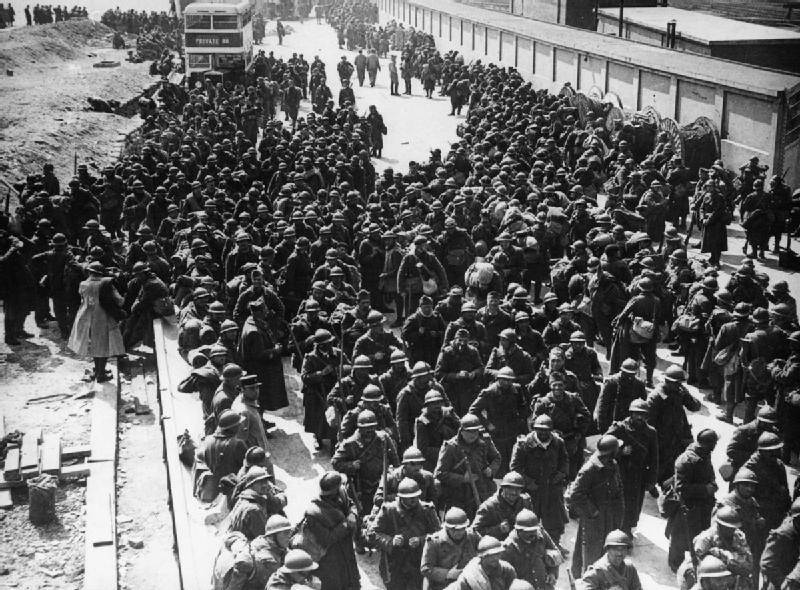
It ended then all is not the most beautiful page in stories for the proud British, an emergency evacuation operation was conducted, in which even civilian ships took part. In general, Operation Dynamo, as the British command dubbed it, raises many questions, the main of which is Hitler’s order to stop the advance of troops to Dunkirk and to stop 10 kilometers from it. With the ban on the advancement of infantry and armored vehicles, the Germans had to use only artillery in order not to violate the order. It was thanks to this order that evacuation became possible, which allowed a huge number of regular military personnel to be taken to Britain. Whether it was a short-sighted deed personally by Hitler or it was the observance of some high-level agreements, let the historians leave, but the fact is that Germany had a great opportunity, if not to disrupt the evacuation, to complicate it as much as possible.
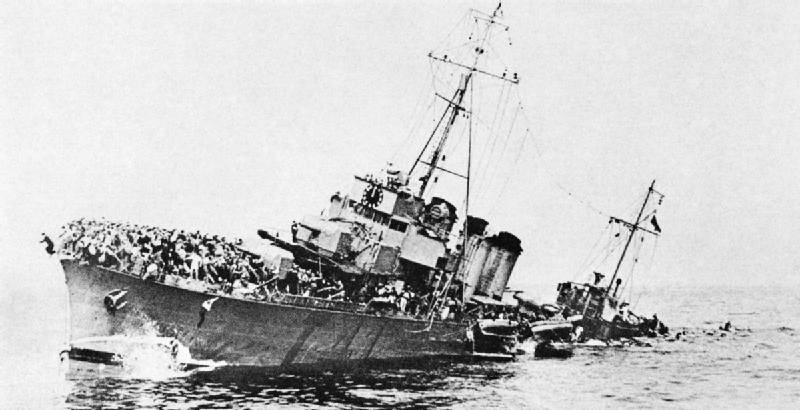
Seeing the superiority of the German army, both numerically and technically, the British military command came to the conclusion that fighting without prior training would lead to inevitable significant casualties among military personnel. The solution was obvious, it was necessary to train specialists for reconnaissance and sabotage operations in the enemy's rear. It can be said that to a certain extent the Germans themselves contributed to the adoption of such a decision during the same Belgian operation. So, 85 German paratroopers, descending on gliders, captured the fort of Eben-Enamel, the garrison of which was 1200 military. Thus, the Germans demonstrated that even a small number of well-trained fighters, with proper planning of the operation, can do the virtually impossible.
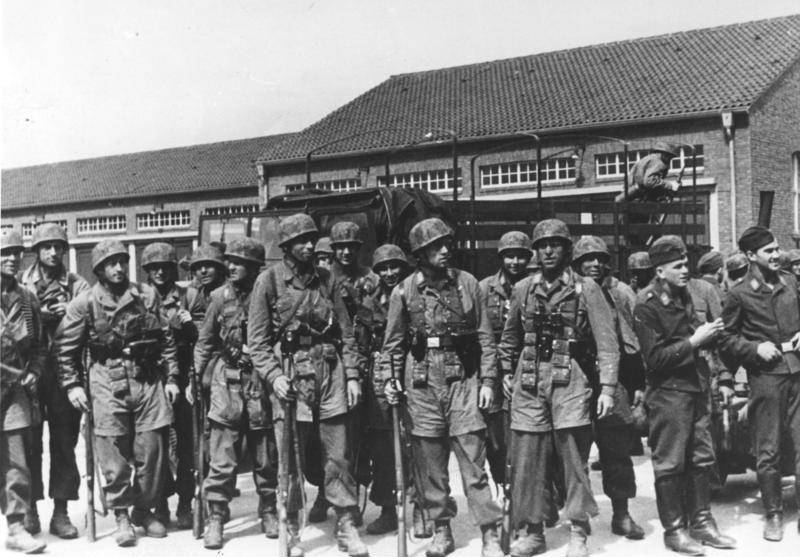
Having made a bet on the action of sabotage groups, the British were not mistaken, as history shows and, to a much greater extent, Hollywood. Nevertheless, it is not even a matter of drawing any definite conclusions; the main problem is to implement something concrete on the basis of these conclusions. The first and main problem faced by the British was the complete lack of specialists who could fully prepare sabotage groups for operations on the enemy’s territory. Of course there were people with combat experience, but this experience relied mainly on the specifics of the hostilities of the First World War, therefore, even with the most careful planning, the first operations very rarely resulted in a happy ending for those who participated in them. In fact, I had to learn from my own mistakes. But their own mistakes showed that the equipment used in the army was absolutely not suitable for reconnaissance and sabotage operations. More compact and effective means of communication were required, more powerful, but light, explosive devices, medicines, the use of which the doctors would call at least self-harm, but which would allow the soldier not to lose its effectiveness even with serious wounds and, of course, it was necessary that would be adapted to perform specific tasks.
In order to provide these all with reconnaissance and sabotage detachments, the British Department of Special Operations organized a design office in the city of Welwyn, whose task was to develop new types of equipment and weapons.
From the walls of this design bureau, quite a few advanced developments at that time were left, it remains only to guess how much is left inside in view of its complex implementation. One of the most famous "products" was the gun Welrod, which has recently received particular popularity due to computer games. But this weapon in its original form did not work out right away; there was another pistol before it, which showed not the highest efficiency, but which perfectly demonstrated which solutions should not be used for such weapons.
The first pancake is always a silent pistol Model-1
While the army needed a weapon with a high rate of fire to ensure maximum density of fire on the enemy, which the rifles with manual reload could not provide, the sabotage and reconnaissance detachments needed light and low-noise weapons. The very first operations showed that the attached “silencer” to the self-loading pistol does not make it a silent weapon, because in the process of reloading the weapon makes sounds that can be confused with little, and which are perfectly audible even at a distance of several hundred meters. It required a new weapon that would allow eliminating the enemy with a minimum amount of noise, and which was not a knife.

It was decided to develop a pistol with manual reloading and a silent shooting device, which is part of the overall design. Like any other weapon, with very few exceptions, the new pistol began to be built “around” the cartridge, here the designers made the main mistake by choosing the most unsuitable ammunition. The patron for the new pistol was 7,65x17 or .32 ACP. One can only guess for what reason the choice fell on this weak ammunition, perhaps the reason lies in its subsonic bullet speed, but in addition to this cartridge there are still a lot of ammunition for pistols much more effective and having also a low initial velocity of the bullet, below the speed of sound. In addition to the initially not the most effective ammunition, the design of the weapon itself was such that the already not the highest characteristics of the cartridge were reduced even more, but this is slightly lower.
The fact that the ammunition was far from being the most effective was not immediately noted; moreover, this cartridge “migrated” to the first two versions of the mass-produced Welrod pistols. The weapons also had other drawbacks, which are already noticeable at the first glance at the work of British designers.
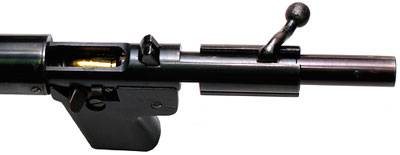
As it is not difficult to notice, the basis for the new pistol was a longitudinally sliding bolt locking the barrel bore when turning. Conversely, for some unknown reason, the designers decided that the bolt handle, which is used in rifles, would be quite appropriate for the pistol. One can only guess how it was necessary to reload this gun - either turning it like a real gangster 90 degrees, or warming his left hand on the casing of the device silently firing while holding, although for left-handers such a weapon would be quite convenient if the implementation of the descent .
Instead of the usual trigger, the Model-1 pistol has a trigger lever on the left side of the pistol grip. In principle, such a solution is quite viable, and even with the deviation of the weapon from the aiming point, while pressing the "descent", it is quite possible to cope if the movement of the lever is small, but why it was implemented in this case remains incomprehensible. Obviously, the weapon didn’t turn out to be the most comfortable to wear, and then, among other things, the pistol gets the opportunity to unpleasantly dig into the body with the same fall.
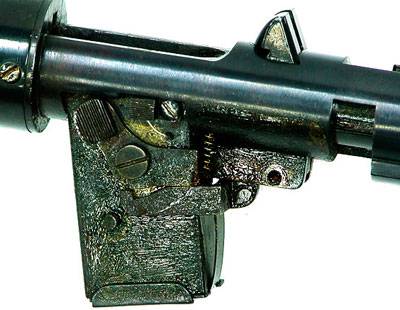
This arrangement of the trigger lever had another unpleasant feature. As can be seen from the images of the weapon, the pistol did not have any safety devices, as it did not have a detachable magazine. That is, by opening the bolt, the shooter loaded the pistol one cartridge through the window for ejection of spent cartridges, and then closed the bolt, and if he did not press on the ammunition during the bolt closing, the cartridge was in the chamber and the gun was ready to fire immediately after pressing on trigger lever. On the one hand, this is excellent - the weapon is always ready for use, on the other hand, because of the location of the trigger lever, it was possible to get injured before any operation, for example, jumping on the spot, checking whether it makes noise out of gear.
Looking at all these shortcomings, it becomes obvious that the designers clearly lacked not only experience in creating such weapons, but also a person who could share his combat experience and requirements for such weapons. The absence of such people is clearly visible in the army, since this gun did not go into mass production, but an experimental batch of five hundred units was made, which entered the troops.
Separately, it is worthwhile to dwell on the design of the device for silent firing of this pistol, since this design, with minor modifications, was also used in the first Welrod pistols. The Model-1 pistol silent shooting device can be divided into two parts. The first was a set of small-sized chambers and three rubber inlays with slots for locking the powder gases. The second part consisted of a larger chamber, into which the powder gases from the barrel bore were diverted through many small holes in the barrel itself. The decision to make holes in the barrel of a weapon had a positive effect on reducing the sound of the shot, but this made the already ineffective cartridge even weaker. In weapons with a similar barrel length in 95 millimeters, the bullet of the 7,65х17 cartridge could reach the initial speed of 310 meters per second, while in the Model-1 gun, the initial speed of the bullet was barely over the mark in 200 meters per second. You can often find information that the effectiveness of a pistol is comparable to a weapon chambered for .22LR, which is not entirely correct. Since for such a comparison it is necessary to have at least information about the bullets of the compared ammunition, because there are a lot of variants of 7,65x17 cartridges, and how many .22 LR were and are ...
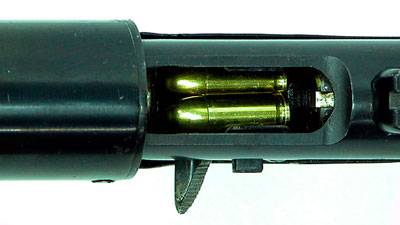
Even without going into details, it is obvious that the gun Model-1 weapon is clearly unsuitable for mass production and adoption. It is quite possible that the same party in the 500 units of pistols was a forced measure, as there was a need for such weapons, but there was no weapon itself. Although it would be more correct to consider not every factor individually, but their combination, namely the lack of specific requirements for ergonomics and weapon effectiveness, insufficient designer experience in designing such weapons, the lack of such weapons with their urgent need and so on. Of course, that in the Office of Special Operations the posts were not occupied by the most stupid people who understood that the Model-1 pistol is not at all the kind of weapon that is needed. Therefore, a list of shortcomings was drawn up that needed to be rectified, unfortunately, they did not include the replacement of ammunition or the mandatory modification of the design of the silent shooting device.
Welrod Silent Gun
During the tests of the Model-1 pistol, the commission from the Special Operations Directorate separately noted the almost complete silence of the weapon, but many decisions in the design of the weapon were completely unacceptable. The main drawbacks that needed to be addressed were the release lever, the shutter knob, the lack of a detachable magazine, and the insecurity of the weapon when worn. After eliminating these shortcomings, the first version of the gun Welrod - Mk. Ii. A little confusion with the numbering of weapons is understandable. Obviously, the first gun was a Model-1, apparently for this reason the first gun with the designation Welrod begins its numbering with a two, although the resulting void was filled in the following, denoting the third most advanced version of the gun Welrod Mk. I, which introduces some confusion in the question of the order of appearance of weapons options.
Silent pistols Welrod Mk II and Welrod Mk IIA
You need to start with the slide group, since this is the difference between the Model-1 and the Welrod Mk II the most obvious. Despite the fact that the changes affected only the shutter handle, which simply did not become, the modernization was more ambitious. In the pistol Welrod Mk II moves only along its axis and does not rotate when locked. Locking is carried out by a washer from the back of the weapon, which, when rotated, engages with the receiver and prevents the bolt from moving backwards. In order to prevent the shutter from being accidentally pulled out of the receiver during the reloading process, there is a small screw on the right side of the gun that limits the movement of the shutter. By unscrewing this screw, you can remove the valve for maintenance.
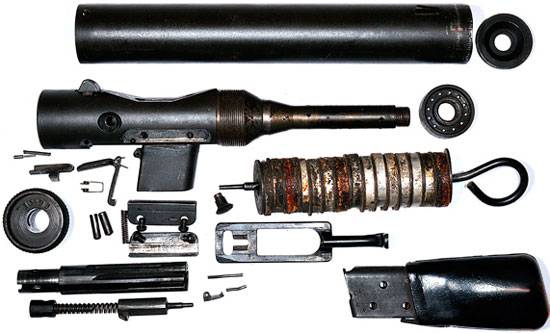
The device of the very same shutter as simplified. So, in the body of the bolt there is a combat spring and a drummer with a hook at the bottom, entering into the clutch with the sear. When moving the bolt forward, the hammer, held by the sear, remains in place, which leads to compression of the mainspring. The interaction of the descent with the sear occurs through a long thrust, which is located around the short shaft of the store, and to which the L-shaped part is welded, which is the trigger of the pistol.
In order to prevent accidental firing, an automatic fuse was introduced into the design, which is controlled by a small lever on the back side of the shaft of the store's receiver. In its normal position, this key blocks the movement of the descent from the rear, which ensures the relative safety of carrying a weapon with a cartridge in the chamber and a cocked drummer. It is not clear why the safety device was not made non-automatic, controlled by the same locking washer of the bolt, which would be more acceptable and safe for such a gun.
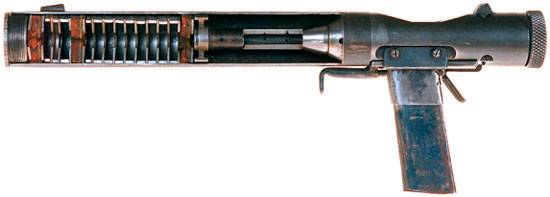
It is impossible not to notice that the handle of the weapon is somewhat unusual, the fact is that the pistol handle is a magazine that has become the 8 xNUMX ammunition 7,65xXNNX single-row capacity. It is interesting that it was recommended to equip the magazine with five cartridges, in order to avoid delays when reloading. It is also noteworthy that the Welrod Mk II pistol, as well as the subsequent versions of the weapon, could be used without a magazine, which, thanks to the design of the weapon, made it possible to hide it in the sleeve or pants, although it would be possible to shoot only once.
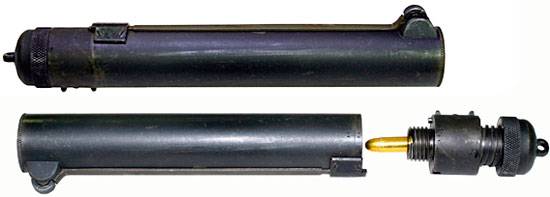
Based on this feature of the gun, another device was designed - the Sleeve Gun, which, by design, was a simplified single-shot gun Welrod Mk IIA. The main difference was the lack of a store and a modified shutter. Instead of the bolt group of the Welrod pistol, a “plug” was used in which the cartridge was inserted and which was screwed into the receiver. The drummer's platoon was made with two turns of the back part of the “plug,” which, by means of a thread, moved backward and, thanks to it, made a movement forward when turning in the opposite direction. The striker was lowered by a small part with notches at the front edge of the device for silent shooting. This detail has been connected by a strain that goes through the entire length of the device and interacts with the sear that holds the drummer. There is no information on serial production of such sufficiently specific firing devices, although one of the museum exhibits contains a serial number of more than a thousand, it is quite possible that he migrated from there from a Welrod Mk IIA pistol, which served as a donor for this weapon.
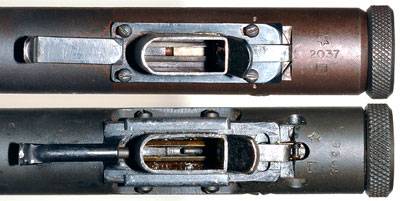
Since we have touched upon the next version of the pistol, the Welrod Mk IIA, it will not be superfluous to clarify how it differs from its predecessor. Most of the changes in the weapon were made only to reduce the complexity of the production, which is clearly visible on the window for the release of spent cartridges, on which the edges appeared. Sights, shape of individual parts were slightly changed. If we talk about changes in the design itself, then the most important such change was the transfer of the descent spring. Now, instead of a flat plate, the descent began to be made of a tube, inside which a small spring was placed and an emphasis for it, which rested at one end against the spring and the other into the shaft of the store's receiver.
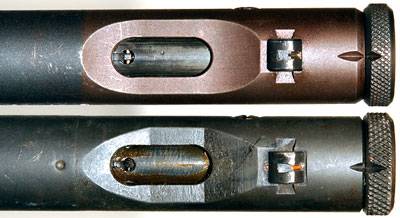
Pistols Welrod Mk II and Welrod Mk IIA had a mass of just over one kilogram. The length of the weapon was 95 millimeters, with a total length of 310 millimeters. The maximum thickness of the pistol was reached in the area of the receiver - the CBE case and was equal to 35 millimeters. This gun was produced from the beginning of the 1943 of the year to the end of the 1944, this weapon was in service with the special forces of the armies of Great Britain, the USA and Australia until the middle of the 1970-s, and it was in the caliber 7,65, despite the existence of a version of the weapon chambered for 9X19. Obviously, this is explained by the fact that for less than two years 14 thousands of pistols Welrod Mk II and Welrod Mk IIА were produced. It should be noted that you can often find an American gun. 32 Hand Firing Mechanism, Mod. The Mk I, which, as the name implies, feeds on 7,65x17 cartridges, but at the same time has in its name the designation of the British nine-millimeter model.
Silent Gun Welrod Mk I
As it was already written above, the nine-millimeter version of the pistol was designated Welrod Mk I. Its appearance was quite logical further development of this weapon, since the main drawback, in the form of ineffective ammunition, was repeatedly noted by those who used this weapon. Despite the fact that the weapon externally changed only with details and increased in length, the design of this pistol was significantly reworked, namely, the main part of this weapon was reworked - a silent shooting device.
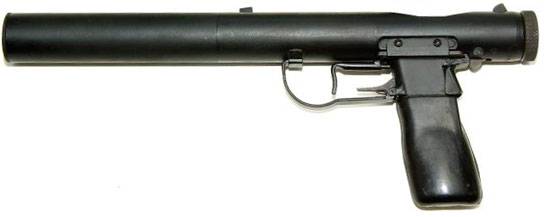
The barrel of the gun has become a full-fledged, without holes for removal of powder gases, it closes the casing, which is now a part of the receiver, and not PBS. This was done in the first place so that the gun could be used without the silencer of the shot. In principle, previous models of the weapon also worked quite smoothly with the silent firing device disconnected, but through the holes for removal of powder gases these gunpowder gases burst, which made the sound of a shot even relatively weak, the 7,65х17, very loud, and in the dark very bright. Back for the possibility of using a gun without PBS was shifted back the front sight of the weapon. The design of the very same muffler sound shot was completely redesigned. Now the Welrod pistol silent shooting device had only two rubber gaskets for locking the powder gases, before the muzzle of the barrel and at the leading edge of the device for damping the sound of a shot. Despite the fact that the barrel of the weapon ceased to “perforate”, the effective volume that was formed between it and the casing was used when firing. In the wall separating the space between the barrel and the silent firing device, there were small holes through which a significant part of the powder gases fell between the barrel and its casing. The very same silent-shooting device already had only one chamber, in which the powder gases were locked with rubber gaskets.
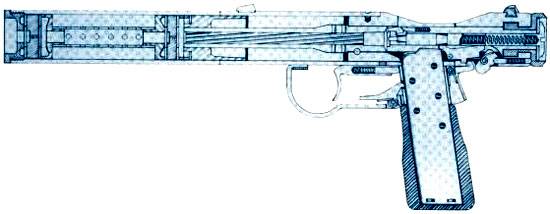
If we talk about the external differences gun Welrod Mk I from previous models, it is impossible not to notice that there was a safety bracket. A small lever inside it, in addition to the descent, is a lever for extracting a magazine from a weapon. Automatic fuse key has become more convenient. In addition, the automatic fuse switch appeared immediately after the automatic key in the form of a swinging part blocking the sear. Due to the fact that a larger ammunition was used in the pistol, the thickness of the handle, also known as the pistol shop, increased, which, in turn, affected the convenience of handling weapons.
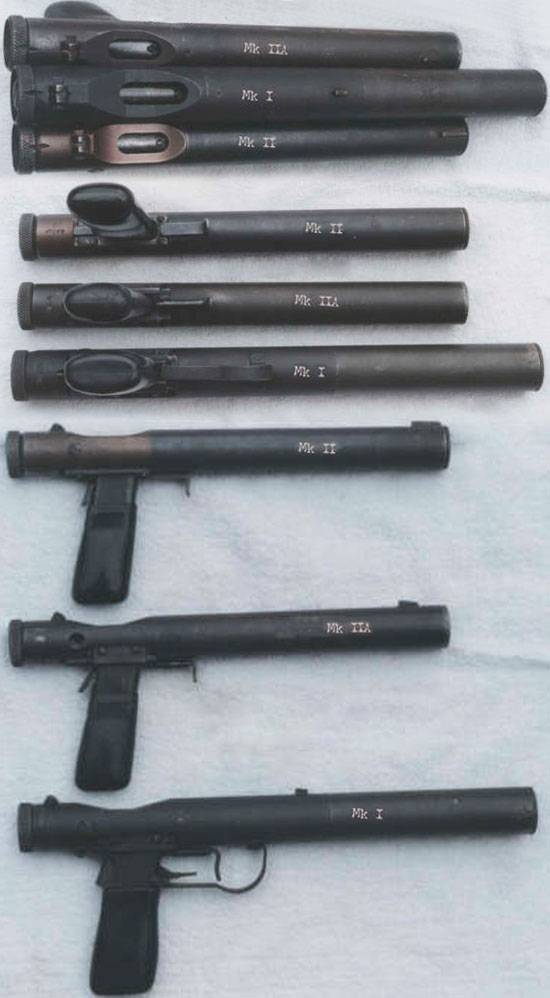 It is obvious that the ammunition used in the pistol was with a subsonic bullet, which confirms the information about the initial speed of the bullet of the cartridge 9х19 equal to 300-330 meters per second. Given the fact that the design of the weapon itself could not reduce the speed of the bullet, it is obvious that the special pistol required special ammunition. With the replacement of the cartridge significantly increased the effectiveness of the weapon, but the gun became louder, but not so much that it became critical in its use.
It is obvious that the ammunition used in the pistol was with a subsonic bullet, which confirms the information about the initial speed of the bullet of the cartridge 9х19 equal to 300-330 meters per second. Given the fact that the design of the weapon itself could not reduce the speed of the bullet, it is obvious that the special pistol required special ammunition. With the replacement of the cartridge significantly increased the effectiveness of the weapon, but the gun became louder, but not so much that it became critical in its use.The mass of the new pistol has grown to one and a half kilograms, the length is up to 360 millimeters, but the barrel length remains the same - 95 millimeters. The store decreased in its capacity and began to hold only 6 9x19 cartridges.
Despite the fact that the release of the new gun was adjusted closer to the end of the Second World War, the weapon managed to take part in the hostilities. In addition, it was used in special units of the US Army until the middle of the 90-s.
The simplicity of the design and high characteristics of the weapon made this gun really unique in its kind, not every weapon can boast such a long period of stay in the army, and if we talk about special weapons, then there are very few such models. Constantly changing demands, changing views on combat operations should have sent these weapons "retired" several years after the end of World War II, but the low noise of this pistol when fired and the low cost of production during wartime was recorded as one of the most recognizable pistols. And even after this weapon was removed from service, it did not become a finish for him.
VP9 Veterinary Pistol
In general, the VP9 gun can be safely considered as a further development of the Welrod pistol already with the use of plastic, modern surface coatings of parts, and so on. However, to some extent, this gun can be called a step back.
Despite the modernized appearance of the weapon, there is one detail in it, which is like a fly in the ointment, namely the barrel, which is not only covered with holes for removal of powder gases, it also has a length of the rifled part about 3-3,5 centimeters. However, this does not prevent the weapon from shooting relatively well. So, at a distance of 10 meters, hitting easily fit in a circle equal to 10 centimeters.
The main issue that interests everyone is the device of the device silent shooting. Of course, there are no schemes in the context of it, and it just does not come across in a disassembled form, but judging by what can be seen from the outside, the basis of the CBE is all the same rubber liners for locking the powder gases. This means that with each successive shot, the effectiveness of the muffler of the sound of the shot will drop slightly, and after a couple of dozen shots, the rubber liners will have to be replaced. It is for this reason that there are two silent firing devices in the weapon set - one “worker” one training one. Training is distinguished by the absence of rubber liners and, apparently, is simply a multi-chamber PBS in which the braking of powder gases by their redirection. The effectiveness of the training CBE is much lower in terms of damping the sound of a shot, but when using it, the accuracy increases significantly, making it possible to reach the circle of 10 centimeters on the same 5 meters.
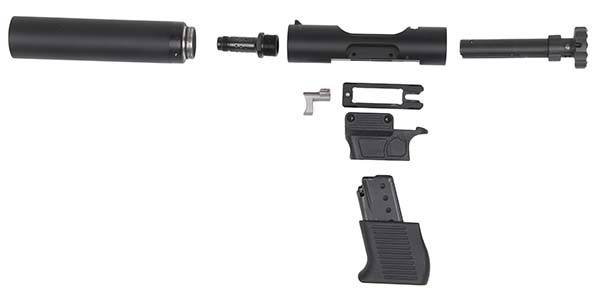
The remaining changes in the design of the weapon are insignificant and it repeats Welrod completely, except that the store eject key was placed on the left side of the shaft.
The maximum thickness of the gun VP9 all the same 35 millimeters. This is the diameter of the device silent shooting weapons. The receiver box is “thinner” a little; its diameter became equal to 32 millimeters. The length of the silent shooting device is 154 millimeters, the total length of the 285 pistol millimeters. The height of the weapon with millimeters 114 magazine attached. Weight - 900 grams. It feeds weapons from a single row detachable magazine with an 5 capacity for 9x19 cartridges.
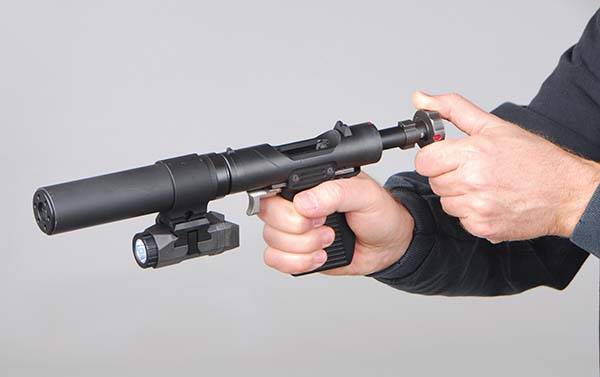
Estimating a new gun is quite difficult. First of all, it is somewhat alarming how the manufacturer positions its weapons. Veterinary pistol with a silent shooting device is certainly cool and to some extent can even be justified, especially when catching aggressive or sick animals that pose a threat to the trapper himself. However, with such a classification, the weapon is already becoming civilized, which somehow does not fit in with the presence of PBS and the fact that the sleeve remains in the chamber after the shot. It turns out that the weapon, which was successfully used by special units a couple of decades ago, will now be used for purely civilian purposes.
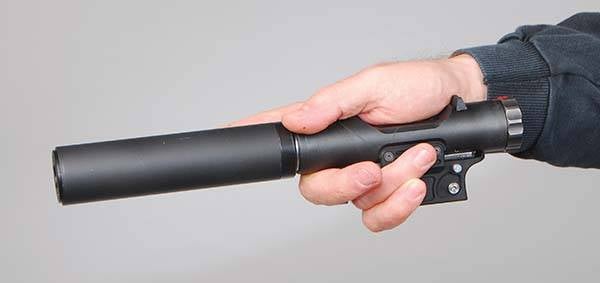
Just in case, you need to remember that it is better not to quarrel with Swiss veterinarians.
Sources:
sadefensejournal.com
www.bt-ag.ch
weaponland.ru
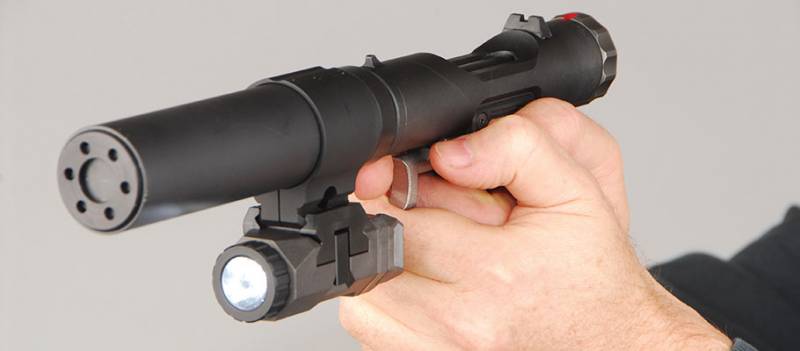
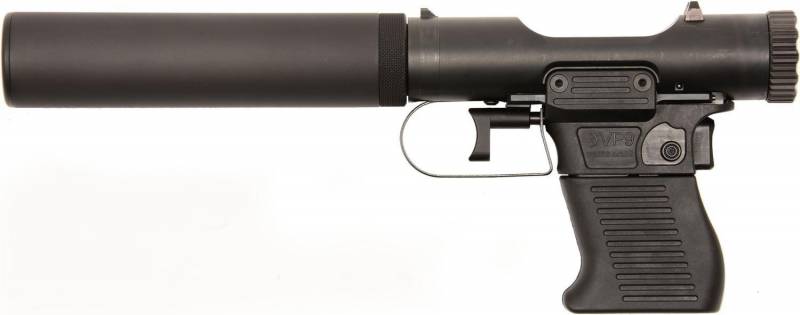
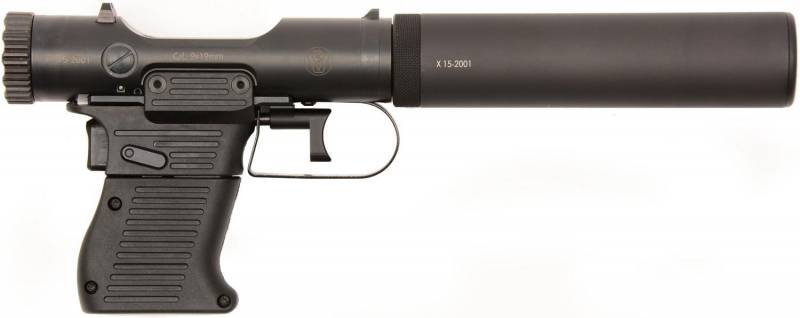
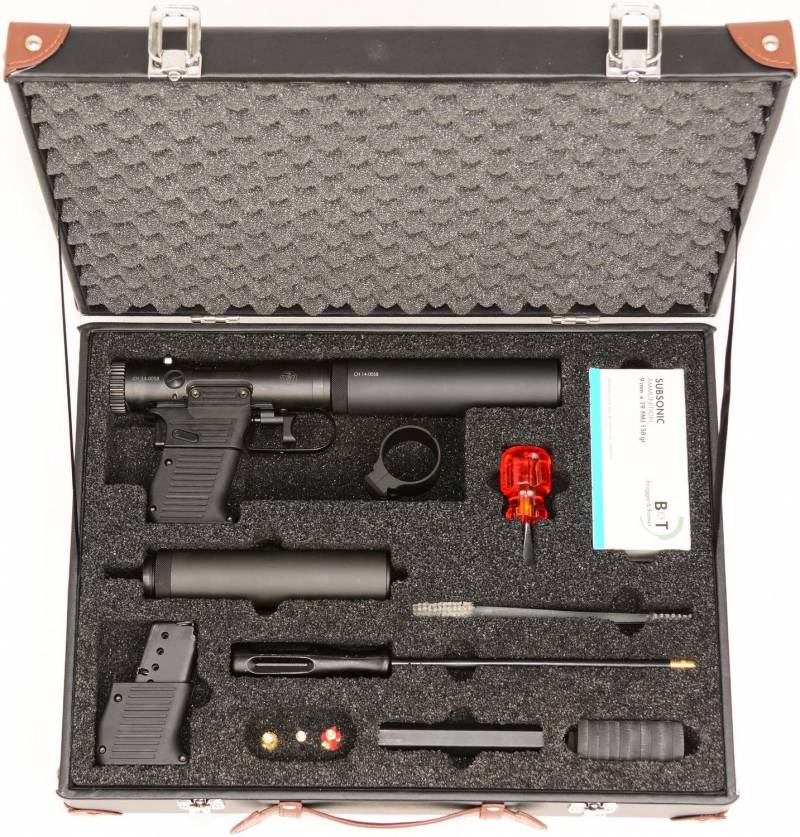
Information